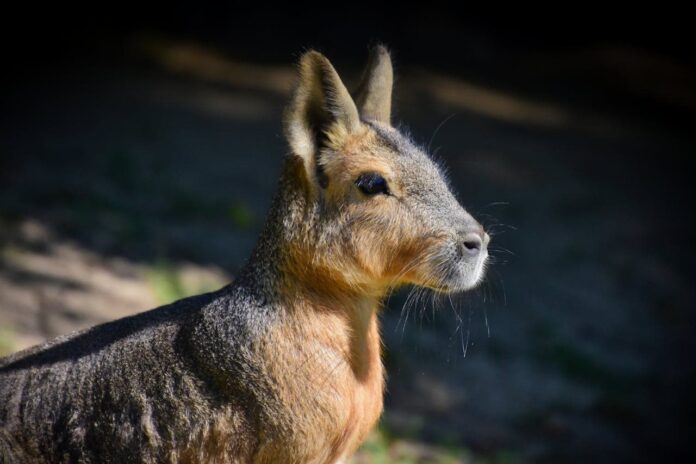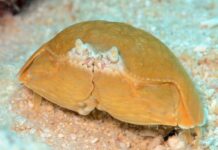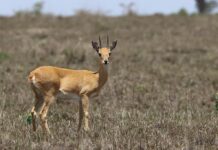Looking like a hare but is not one, the Patagonian mara is more related to the capybara and the guinea pig. We don’t talk much about rodents here, and mara is a perfect topic for this. These rodents are not so well-known, and they are a near-threatened species. It will be nice for people to know more about them, and care about them more. Feel free to check out facts and information about the Patagonian mara below.
1Appearance
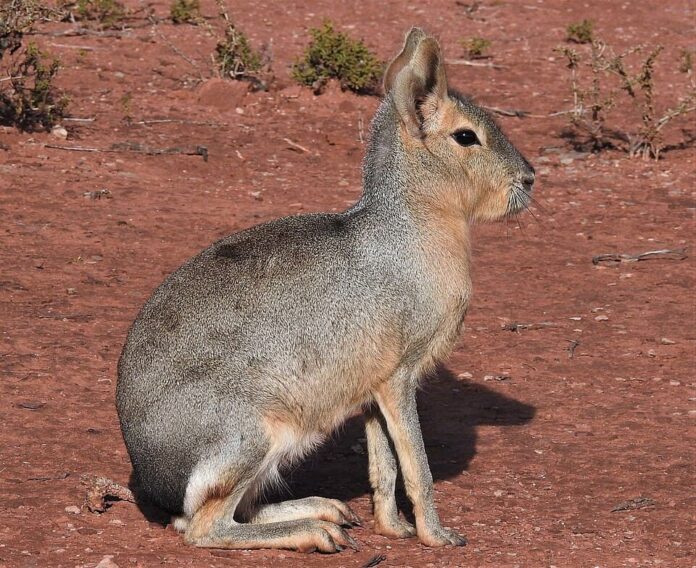
With those upright ears and long limbs, a Patagonian mara looks a lot like a jackrabbit or a hare. It has an adorable face with large eyes and long whiskers. The body of this mara is gray-brown in color, with a white patch on the chest, rump, and stomach. Its coat is dense and stiff, with a very fine texture. And just like a hare, its hind limbs are longer and more muscular than its fore limbs. There are 4 toes on their front feet, and only 3 on their hind feet. Each toe has very strong claws, which they use for defense purposes and digging burrows. You might not see it, but it also has a tail, though short, depressed, and nearly hairless. It measures 69 to 75 centimeters for a head and body length, excluding the 4-5 centimeters tail.
2Behavior
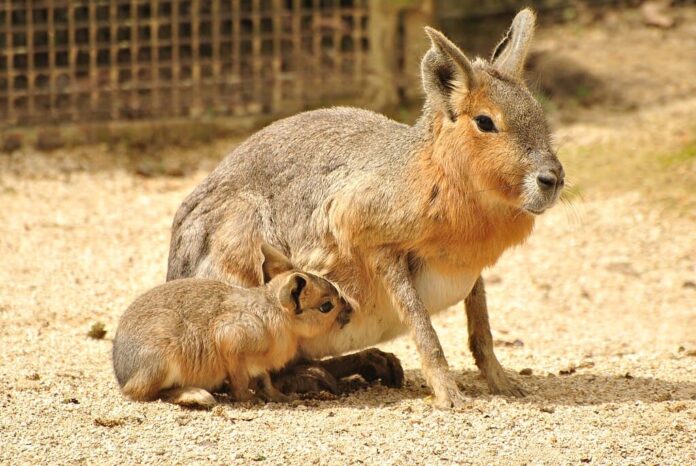
This rodent is monogamous, meaning they have one partner and stay together for life. Replacement of partners occurs only after one’s death. To maintain their relationship, the male follows the female wherever she goes, and she decides when to graze, move, or rest. He marks her with urine, and he also marks the ground around her with secretions from his glands, and with feces. The pair travels together, and the male aggressively protects his mate from rivals and predators. They do breed alone, but they also breed in warrens with several other pairs, sometimes up to 29 pairs.
In the wild, females produce one litter of two pups each year after a gestation period of 90 days. Usually, the parents group the litters together in the dens to increase the young’s chances of survival. With many young inhabiting the den, mother maras recognize their offspring by scent, size, and sound. During this time, the females will take full responsibility for taking care of their young. As for the males, they serve as sentries and protect the dens from potential predators. Males rarely interact with small pups, and they only interact with large pups in foraging or sitting. After 3 weeks, young maras can start grazing outside with their mothers. However, it takes around 75 days for them to stay in nursing before being weaned.
3Feeding & Habitats
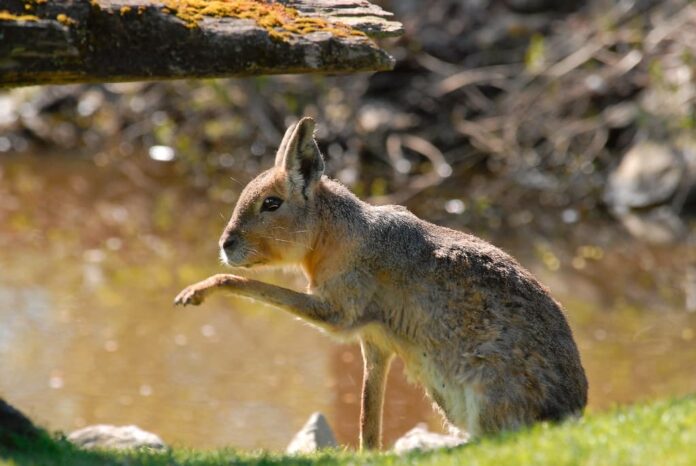
As herbivores, they primarily feed on grasses, but they also eat cacti, flowers, fruits, seeds, and other low-growing plants. One interesting thing about maras is that they are coprophagous, meaning they ingest their own dung to maximize nutrient absorption. Patagonian maras live in open and semi-open habitats in Central and Southern Argentina, including large parts of Patagonia. They prefer arid low-lying grasslands, brush lands, forests, and shrublands with a lot of open space.
To survive in the wild, the Patagonian mara relies entirely on its senses of hearing, smell, and vision in predator detection. In a chase, it can speed up to 45kph to escape predators, making it the world’s fastest rodent. Its common predators are birds of prey, pumas, South American gray foxes, Suran’s foxes, and humans, of course. The Patagonian mara is a Near Threatened species on the IUCN Red List due to habitat alteration and poaching. Humans hunted them for their skin to use for bedspreads and rugs.
Related Post: Vizcacha Facts

